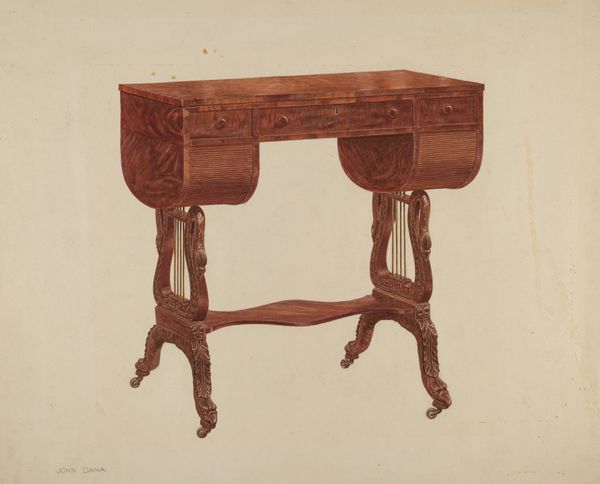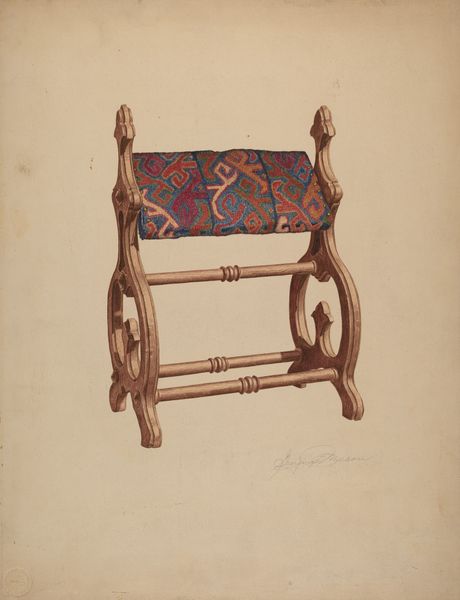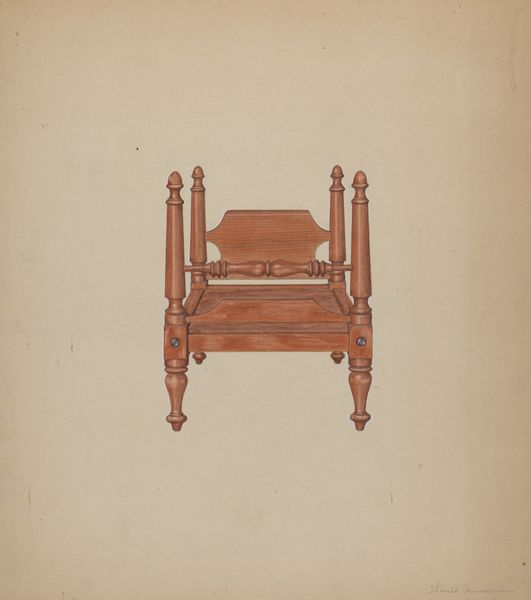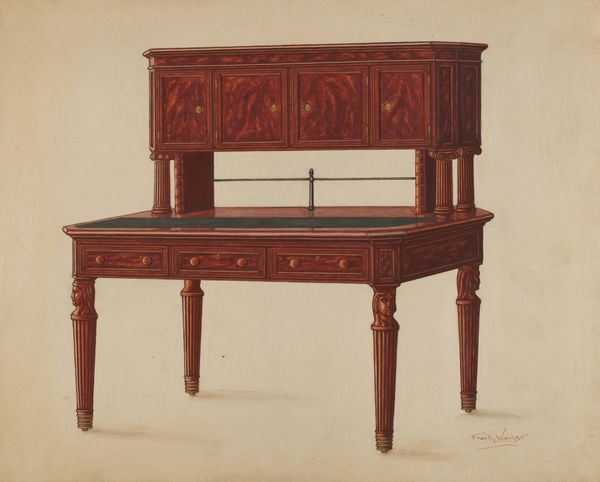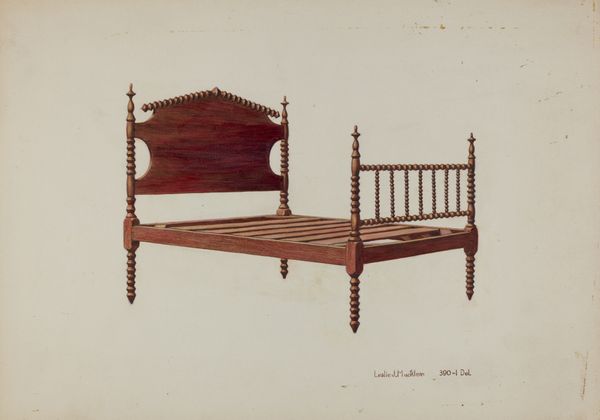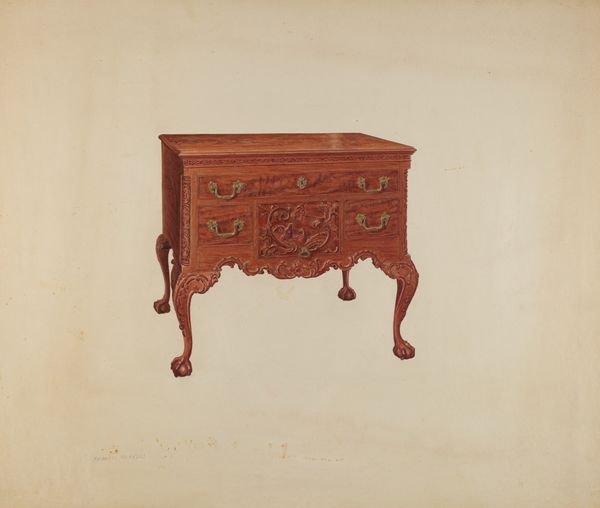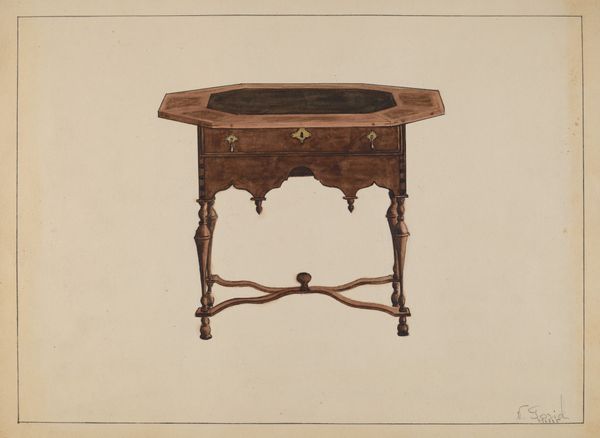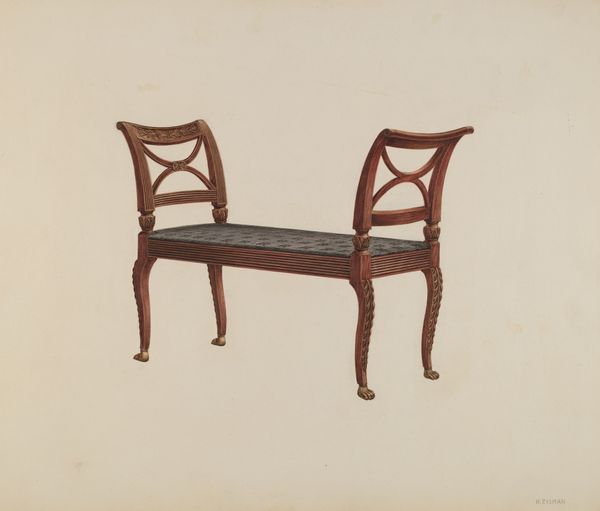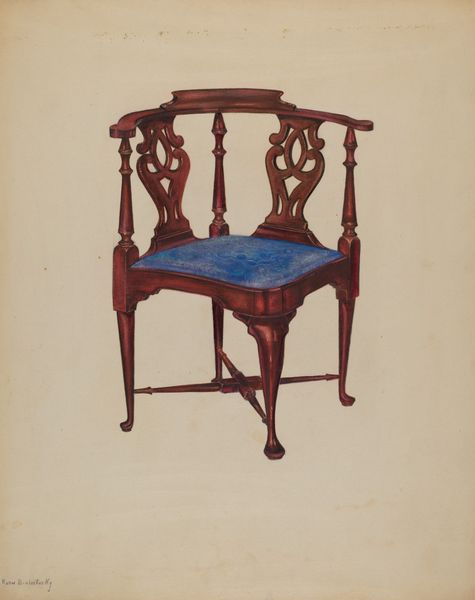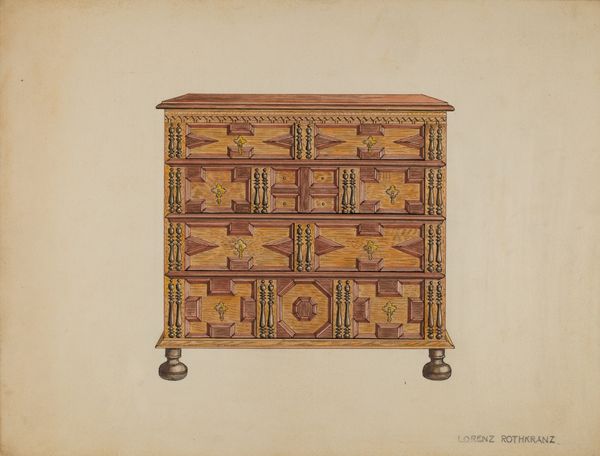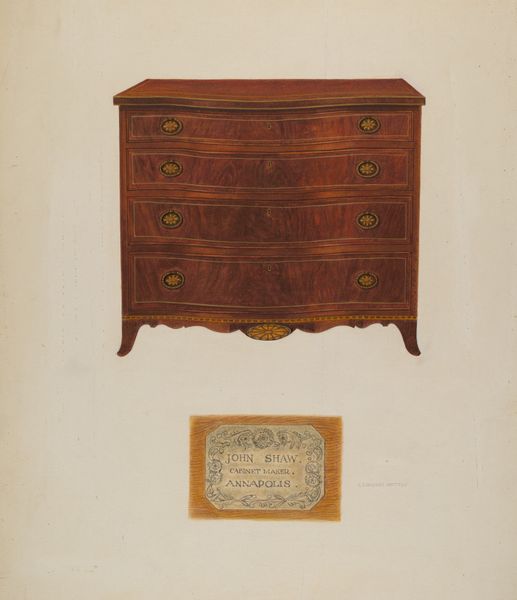
drawing, tempera, watercolor, pencil
#
drawing
#
tempera
#
charcoal drawing
#
watercolor
#
folk-art
#
pencil
#
watercolour illustration
#
watercolor
Dimensions: overall: 29.2 x 36.3 cm (11 1/2 x 14 5/16 in.) Original IAD Object: 4'7"x 2'3"
Copyright: National Gallery of Art: CC0 1.0
Curator: Here we have Grace Thomas's "Baby Cradle," circa 1939, executed in watercolor, tempera, and pencil on paper. What are your first thoughts? Editor: It feels both precious and slightly worn. The colors are muted, but the craftsmanship—evident even in this rendering—suggests a well-loved object. Almost like a family heirloom. Curator: Precisely. These renderings of material objects were part of a larger project. During the Depression era, artists were employed by the government to document American folk art and design, emphasizing regional traditions. It really underscored American identity in a time of crisis. Editor: And this cradle, the handmade details... It speaks volumes about the labor involved. I am wondering who crafted this specific object. Were they a skilled woodworker or family members collaborating on preparing for the child's arrival? It is interesting how social constructs become materially evident in folk objects such as this. Curator: It's fascinating how that labor intersects with gendered expectations, too. Often these items are overlooked because they are created by women or associated with domestic life, outside of formal fine art traditions, though no less formative to artistic output. Editor: And you can imagine the context. The availability of materials during that time... were they using repurposed wood? What sort of paints would be accessible? The materiality offers this quiet testament to the hardships and resourcefulness that were everyday life for makers. Curator: Definitely. There is this tension between scarcity and beauty that makes objects like this "Baby Cradle" all the more meaningful as cultural touchstones, signaling both survival and belonging. Editor: Yes, belonging. The cradle is also waiting, an invitation... to what kind of a world, though? We're looking at a very specific historical moment and even then the meaning might have been multiple and contested. Curator: Which is why it is so important to have them documented in collections, interpreted by museums for future generations who can also draw insights and understanding from the historical object rendered on paper, centuries after it was painted. Editor: Ultimately, this image provokes us to consider the labor and lived experiences embedded within everyday objects and materials that are always deeply linked to time, place and power.
Comments
No comments
Be the first to comment and join the conversation on the ultimate creative platform.
